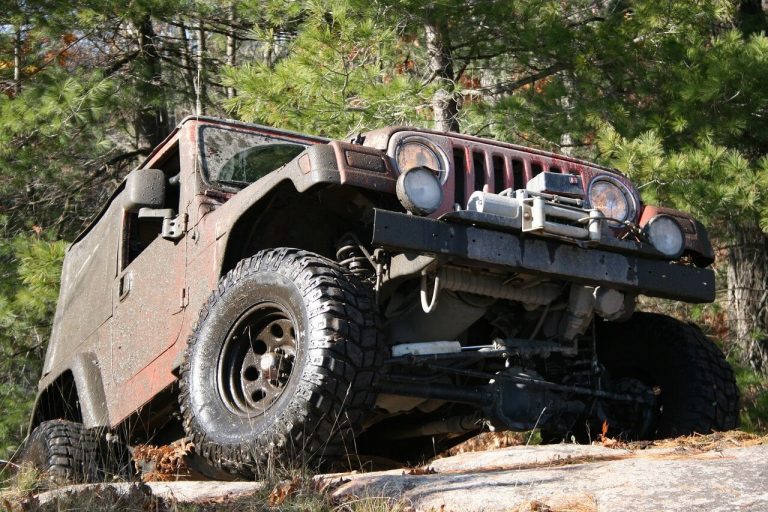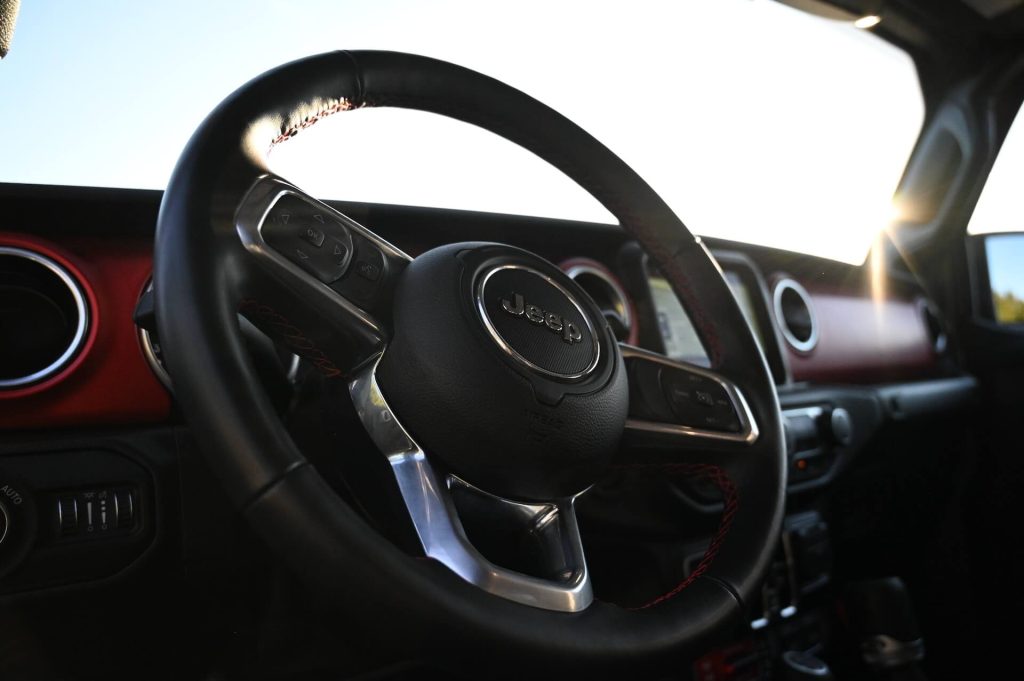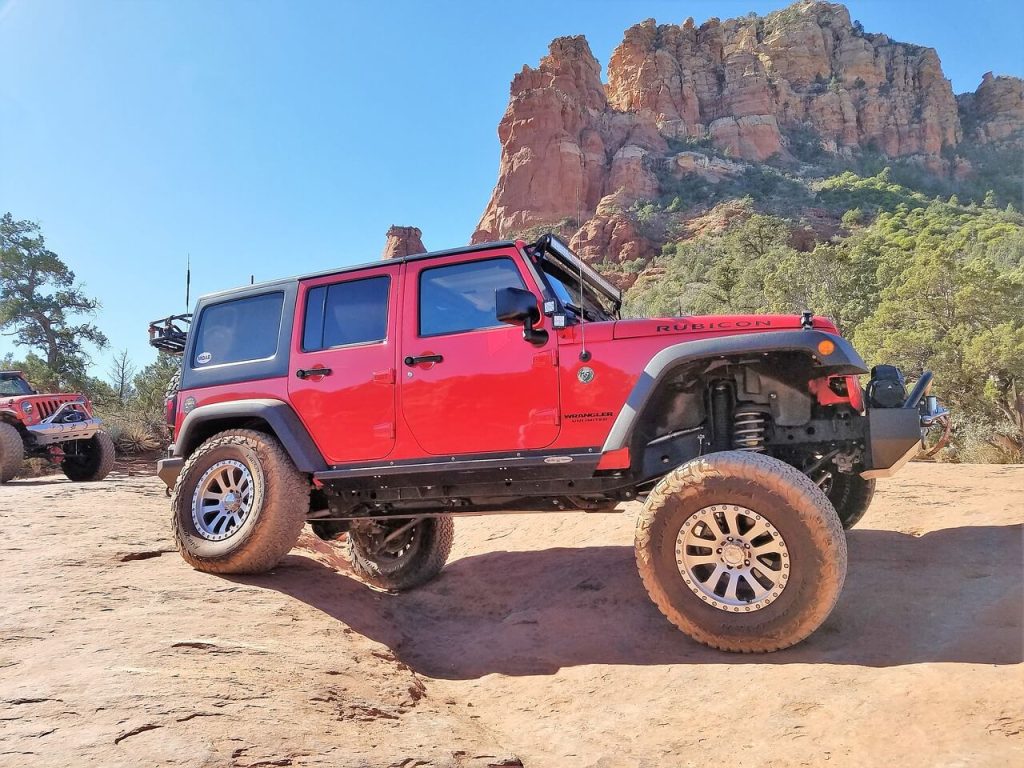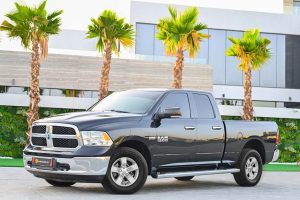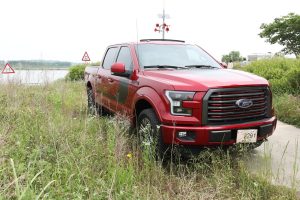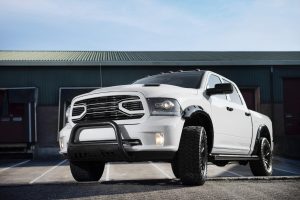There’s nothing like the thrill of taking a Jeep out for a drive off-road. The freedom and power that 4-wheel driving brings is an adventure that you won’t soon forget. However, getting your Jeep into four wheel drive can be daunting if you don’t know how to do it. If you want to get the most out of your Jeep, then you must understand how to shift into a four-wheel drive.
Don’t worry – we’ve got all the information you need on how to put Jeep in 4 wheel drive in this comprehensive guide! Whether you’re a rookie or an off-roading pro, these tips will help ensure your Jeep is ready for adventure. So let’s get started and make sure nothing stands between you and total control over any terrain!
Table of Contents
ToggleWhat is a 4-Wheel drive?
Before we dive into how to put Jeep in 4 wheel drive, it’s important to understand what four-wheel drive is, when you should use it, and how it works. At its most basic level, 4WD is a system that allows all four wheels of an automobile to simultaneously receive power from the engine.
This means that rather than having two powered wheels (front or rear) and two unpowered wheels (the opposite end of the vehicle), all four wheels are powered, allowing for greater traction on uneven surfaces such as mud, sand, ice, snow, or rocky terrain.
When Should You Use It?
One of the most common reasons to use a four-wheel drive is when the weather conditions are poor. If you live in an area that gets a lot of snow or rain, a four-wheel drive can help you get around more easily. It can also be helpful if you’re driving off-road, such as on a beach or in the mountains.
When You’re Towing Something Heavy
Another time when you need a four-wheel drive is when you’re towing something heavy. If you’re going to be pulling a trailer or camper, a four-wheel drive can give you the extra power and traction you need. This is especially true if you’ll be off-roading with your trailer.
When You Need Extra Traction
Finally, you might need a four-wheel drive for extra traction. It can be helpful if you’re driving on slippery surfaces like ice or gravel. It can also be helpful if you’re trying to escape a ditch or other difficult situation. A four-wheel drive can give you the extra power and traction you need to get where you’re going safely.
How Does It Work?
4WD systems typically use two differentials – one for each axle – to divide power between the front and rear wheels. Depending on the situation, the system then uses a transfer case to distribute power between the two axles.
For example, when driving on dry pavement, most systems will send more power to the rear wheels than to the front wheels. However, more power is sent to the front wheels for increased traction and stability when driving off-road or in slippery conditions.
Lastly, an electronic control module helps to monitor and adjust power distribution depending on road conditions and driver input. It ensures that your Jeep has maximum performance no matter what type of terrain or road condition you are driving on.
Steps for Putting a Jeep in 4 Wheel Drive
Now that you know how four-wheel drive works, let’s look at how to put your Jeep in a four-wheel drive. The specific steps will vary depending on the Jeep model you have and how it is equipped. So be sure to refer to your owner’s manual for exact instructions.
For most Jeeps, the process is fairly simple and straightforward. Here’s how to do it:
Step One: Start with Your Jeep in Park
First things first, you want to make sure your Jeep is turned off and in the park before you do anything. Once it’s turned off, engage your emergency brake and chock the back tires of your Jeep, so it doesn’t roll while you’re working. It would be best to put on gloves to protect your hands since you’ll be working around some greasy parts.
Step Two: Locate the Transfer Case Lever
The transfer case is what allows power to be distributed to all four wheels of your car instead of just the two in the front or back. To put your Jeep into a 4-wheel drive, you need to locate the transfer case lever. It’s usually located on the floor near the shifter.
Step Three: Move the Transfer Case Lever into the 4H position
Once you’ve found the transfer case lever, it’s time to move it into the 4H position. It is typically done by moving the lever from 2H to 4H. If your Jeep has a part-time 4WD system, you’ll need to move slowly (under 25 mph) when you switch it over so you don’t damage any parts.
If your Jeep has a full-time 4WD system, you can move the transfer case lever while stopped or driving faster than 25 mph.
Be sure to double-check that the light on your dash indicates that your Jeep is in 4WD mode before moving on.
Step Four: Engage Your Front Hub Locks (if Necessary)
Some Jeeps have front hub locks that need to be engaged in order for power to reach the front wheels. These are usually located near the front wheels and are easy to spot since they’re usually bright yellow or red. Once you’ve found them, turn them until they click into place, and then move on to step five. If your Jeep doesn’t have front hub locks, then you can skip this step entirely.
Step Five: Test It Out!
Now that everything is set up, it’s time for a test drive! Find a safe place where you can slowly drive around and get a feel for how your Jeep handles now that it’s in 4-wheel drive mode. Be mindful of any strange noises or smells from under the hood, and watch for any leaks. If everything seems fine, then congratulations! You’ve successfully put your Jeep into 4-wheel drive mode!
Also Read: How Do You Know If Your Transmission is Going Out
Common Misconceptions
There are many things that need to be clarified about how to put Jeep in 4 wheel drive. Some people think you must stop the car and get out to engage the 4-wheel drive. Others think that you can only engage 4-wheel drive when the car is not moving. Still, others think that 4-wheel drive should only be used in off-road situations. The reality is that none of these things are true! Here’s a look at the most common misconceptions about how to put Jeep in 4 wheel drive and the facts behind them.
Myth #1: You have to stop the car and get out to engage 4-wheel drive.
Fact: You can engage 4-wheel drive while the car is moving. In fact, it’s often easier to engage 4-wheel drive while the car is moving because you don’t have to line up the gears perfectly when you’re stopped. Just shift into neutral, flick the switch to engage 4-wheel drive, and then put the car back into gear.
Myth #2: You can only engage a 4-wheel drive when the car is not moving.
Fact: See above! You can engage 4-wheel drive while the car is moving, which can be handy if you find yourself in a situation where you need it but don’t have time to stop. Remember to shift into neutral before engaging in the 4-wheel drive so you don’t damage the gears.
Myth #3: You should only use the 4-wheel drive in off-road situations.
Fact: While the 4-wheel drive is great for off-roading, it’s also helpful in other situations. For example, if you live in an area with a lot of snow and ice, using 4-wheel drive can help improve your traction and prevent sliding on slick roads.
Myth #4: The 4-wheel drive will improve fuel efficiency
Fact: 4WD reduces how efficiently your car uses fuel since it takes more power to operate all four wheels instead of just two. So if you’re looking for a way to save money at the pump, then there are better answers than 4WD.
Steps to Put Your Jeep Back Into Two-Wheel Drive
There are a few reasons you may need to put your Jeep back into two-wheel drive. You took it off-roading and now want to switch back to the drive home and want to save some gas. Whatever the reason, it’s easy to do—follow these simple steps.
Step 1: Park your Jeep in a safe, level area. You’ll need to be able to access all four tires so you can engage and disengage the locking hubs.
Step 2: Put your Jeep in neutral and turn off the engine.
Step 3: Disengage the locking hubs. There should be a lever near each tire that you can push or pull to disengage the lock.
Step 4: Put your Jeep back in the park and turn on the engine.
Step 5: Engage the transfer case lever. It will be located on the floor near the center console. Move it from “4WD” to “2WD.”
You’re now ready to head out on the open road! Just remember to switch back into four-wheel drive when you hit those unpaved trails again.
Also Read: Temporary Fix For Crankshaft Position Sensor
Frequently Asked Questions
Can I engage a 4-wheel drive while the car is moving?
Yes, you can! Just shift into neutral and then flick the switch to engage 4-wheel drive. Put the car back in gear when it’s ready to go.
How often should I check my 4-wheel drive system?
It’s recommended that you check your 4-wheel drive system at least once a year or whenever you notice any unusual noises or changes in how the car is driving. Pay special attention to the transfer case and differential fluids, as these are essential for the proper operation of the four-wheel drive.
How much can a jeep wrangler tow?
The towing capacity of a Jeep Wrangler depends on the model and engine size. Generally, a Jeep Wrangler can tow up to 3,500 pounds when properly equipped. However, if you’re planning to haul any heavy loads, it’s best to consult your owner’s manual for more detailed information about how much weight your specific model can safely tow.
What should I do if the 4-wheel drive isn’t working?
If you find that your Jeep’s 4-wheel drive is not engaging, it may be due to a problem with the transfer case or differential. Check the fluids in both components and replace them if necessary. It’s also a good idea to check all the connecting links in the 4-wheel drive system for any damage or wear and tear. If everything fails, you may need to take your Jeep to a certified mechanic for further inspection.
What speed should I drive while in the 4-wheel drive?
Generally, it’s best to keep your speed below 40 mph while in 4-wheel drive. This helps reduce wear and tear on the transmission and other parts of the 4-wheel drive system. It also improves traction and control when you’re driving off-road or on slick surfaces.
Conclusion
Using 4-wheel drive is a great way to get the most out of your Jeep, especially when driving off-road or in slippery conditions. With just a few simple steps and some basic maintenance, you can keep your 4-wheel drive system running smoothly for years to come. Remember that four-wheel drive reduces fuel efficiency, so it’s best to switch back to two-wheel drive when you’re not using it. Following these tips and taking good care of your Jeep will ensure you get the most out of your 4-wheel drive experience.
Happy trails!

